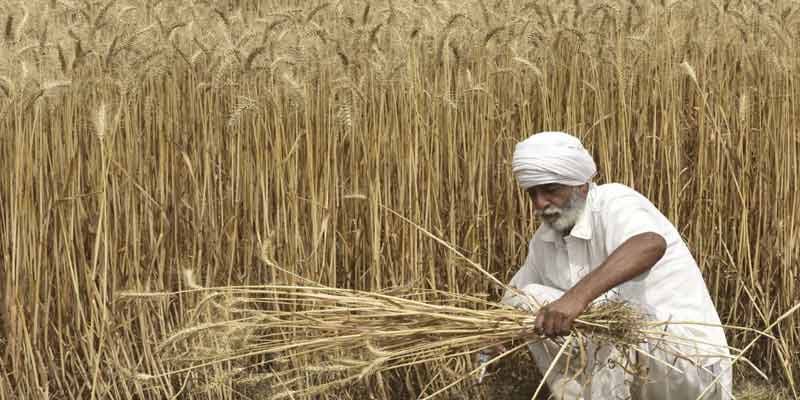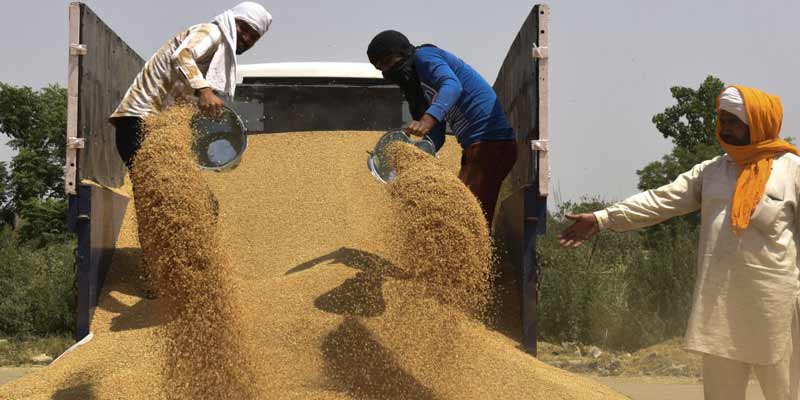- India
- May 15
Explainer / Why India has banned wheat exports?
• India has banned wheat exports in a bid to check high prices amid concerns of wheat output being hit by scorching heat wave.
• The decision would help control retail prices of wheat and wheat flour (atta), which have risen by an average 14-20 per cent in the last one year, besides meeting the food grain requirement of neighbouring and vulnerable countries.
• However, the commerce ministry has allowed wheat shipments with valid irrevocable letters of credit issued on or before the date of the notification.
• Wheat exports will be allowed on the basis of permission granted by the government of India to other countries to meet their food security needs and based on the request of their governments.
• The country has contracted for the export of 4.5 million tonnes of wheat so far this fiscal. Out of which, 1.46 million tonnes was exported in April, as per the official data.
• The ban on exports also comes amid disruption in global wheat supplies due to the ongoing war between Russia and Ukraine which are major exporters of the food grain.
• Many other countries such as Turkey, and the US have imposed different restrictions on wheat exports.
Record wheat exports last year
• India’s wheat exports stood at an all-time high of 7 million tonnes, valuing $2.05 billion, in 2021-22 fiscal year on better demand of Indian wheat from overseas. Of the total wheat exports, around 50 per cent of shipments were exported to Bangladesh in the last fiscal.
• India was looking to export 10 million tonnes of wheat in 2022-23. The commerce ministry recently stated that India would send trade delegations to nine countries to explore possibilities of boosting wheat shipments.
• India’s wheat production has been revised lower to 105-106 million tonnes for the 2022-23 crop year (July-June) from an earlier estimate of 111 million tonnes, due to heat wave, especially in northwestern India.
• Even the government’s wheat procurement is expected to be lower at 18.5 million tonnes from the earlier estimate of 19.5 million tonnes and the initial target of 44.4 million tonnes for the current year.
• So far, about 18 million tonnes of wheat has been procured by the Food Corporation of India (FCI) and state agencies.
To cool down domestic prices
• Official data released this week showed that retail inflation surged to an eight-year high in April due to high prices of fuel and food items.
• Commerce Secretary B.V.R. Subrahmanyam, Food Secretary Sudhanshu Pandey and Agriculture Secretary asserted that there was no crisis of wheat supply in the country and the government’s decision is expected to cool down the domestic prices.
• The tight global supply, including a slight fall in wheat output in India, has spiked global prices up sharply. Consequently, the domestic prices of wheat and wheat flour (atta) have also shot up in the last month.
• The daily average retail price of wheat has increased by 19.34 per cent to Rs 29.49 per kg on May 9 compared with Rs 24.71 per kg in the year-ago period. Similarly, retail atta prices have shot up by 14.27 per cent to Rs 32.91 per kg from Rs 28.8 per kg in the comparable period.
• In the wholesale market too, the daily average price of wheat rose 21.55 per cent to Rs 25.82 per kg on May 9 compared with Rs 21.24 per kg in the year-ago period, while atta price rose 15.88 per cent to Rs 27.89 per kg from 24.06 per kg in the comparable period.
• The maximum increase in retail atta prices was 33 per cent in a year seen in the southern zone, followed by the eastern zone 12.08 per cent, the western zone 10.74 per cent and the northern zone 8.29 per cent in last one year.
• If the price situation improves, the government may review this decision.
• However, officials said it will not be possible to predict how much prices will fall.
• After consulting with the states, the Centre has reallocated some quantities by changing ratios of wheat and rice. For example, states getting wheat and rice in the ratio of 60:40 will get it in the ratio of 40:60. Similarly, the ratio of 75:25 is made 60:40. Where rice allocation was zero, they will continue to get wheat. For all small states-NE states and special category states, allocation has not been changed.
• Directing the wheat exports through government channels would not only ensure fulfilling the genuine needs of our neighbours and food-deficit countries but also control inflationary expectations.
Manorama Yearbook app is now available on Google Play Store and iOS App Store



